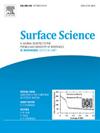表面和界面上的相对论效应
IF 1.8
4区 化学
Q3 CHEMISTRY, PHYSICAL
引用次数: 0
摘要
原子自旋轨道耦合(SOC)是电子绕原子核运动的一种相对论性现象。SOC将电子的自旋和自由轨道运动耦合在一起。SOC也对低维系统(如固体表面和界面)产生显著影响,其中结构反演对称性被打破,产生非平凡现象,例如在没有外部磁场的情况下二维电子能带的自旋分裂。SOC还创造了一种不寻常的物质状态,拓扑绝缘体。本文简要介绍了强自旋轨道耦合及其在表面和界面上的影响。本文章由计算机程序翻译,如有差异,请以英文原文为准。

Relativistic effects at surfaces and interfaces
The atomic spin–orbit coupling (SOC) is a relativistic phenomenon for electrons moving around a nucleus. SOC couples the spin and orbital motions of freedom of an electron. SOC also gives rise to a significant effects on low-dimensional systems such as solid surfaces and interfaces, where the structural inversion symmetry is broken, yielding non-trivial phenomena such as the spin splitting of two-dimensional electronic energy bands without an external magnetic field. SOC also creates an unusual state of matter, topological insulator. In this short review, strong spin–orbit coupling and its consequences at surfaces and interfaces are briefed.
求助全文
通过发布文献求助,成功后即可免费获取论文全文。
去求助
来源期刊

Surface Science
化学-物理:凝聚态物理
CiteScore
3.30
自引率
5.30%
发文量
137
审稿时长
25 days
期刊介绍:
Surface Science is devoted to elucidating the fundamental aspects of chemistry and physics occurring at a wide range of surfaces and interfaces and to disseminating this knowledge fast. The journal welcomes a broad spectrum of topics, including but not limited to:
• model systems (e.g. in Ultra High Vacuum) under well-controlled reactive conditions
• nanoscale science and engineering, including manipulation of matter at the atomic/molecular scale and assembly phenomena
• reactivity of surfaces as related to various applied areas including heterogeneous catalysis, chemistry at electrified interfaces, and semiconductors functionalization
• phenomena at interfaces relevant to energy storage and conversion, and fuels production and utilization
• surface reactivity for environmental protection and pollution remediation
• interactions at surfaces of soft matter, including polymers and biomaterials.
Both experimental and theoretical work, including modeling, is within the scope of the journal. Work published in Surface Science reaches a wide readership, from chemistry and physics to biology and materials science and engineering, providing an excellent forum for cross-fertilization of ideas and broad dissemination of scientific discoveries.
 求助内容:
求助内容: 应助结果提醒方式:
应助结果提醒方式:


